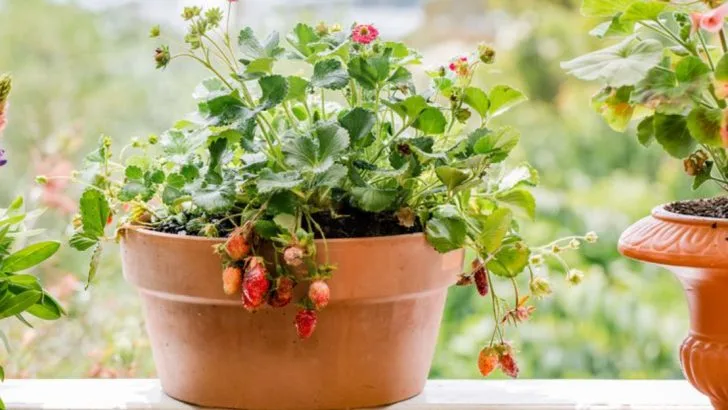There’s nothing quite like picking a sun-warmed strawberry right from your own container garden — no matter the size of your space. With the right approach, you can grow sweet, juicy berries on a patio, balcony, or even a sunny windowsill.
In this article, you’ll find 15 essential tips to help you grow strawberries in containers successfully, from choosing the right varieties and soil, to maximizing sunlight, moisture, and yield. Whether you’re a beginner or an experienced gardener, these strategies will help you enjoy fresh berries anytime, without needing a full garden bed.
Container-grown strawberries are easy, rewarding, and just a few smart choices away.
Choose the Right Container
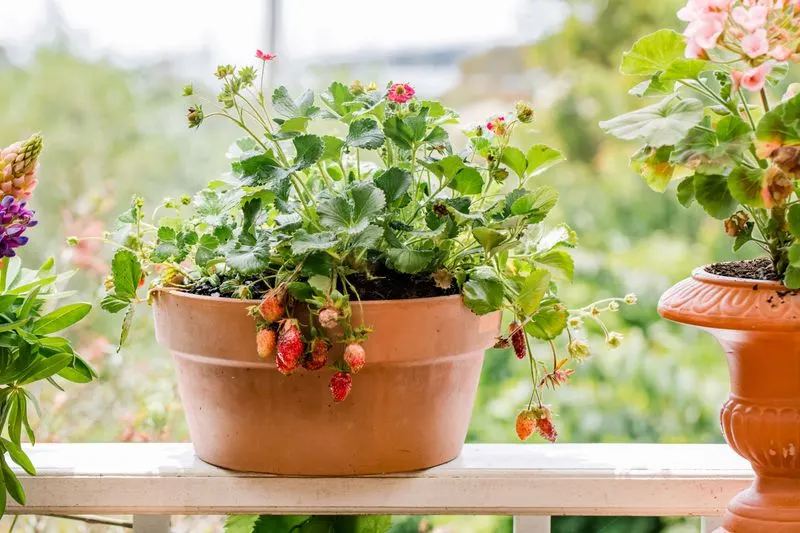
Selecting the perfect container is the first step to successful strawberry cultivation. Opt for containers with good drainage, such as terracotta pots or hanging baskets. Ensure they are at least 12 inches deep to accommodate the roots.
Hanging baskets are ideal for saving space while providing excellent drainage. If using a planter box, make sure there’s enough room for multiple plants, about 6-8 inches apart.
Consider the aesthetics too—a stylish container can enhance your patio’s appeal. Choosing the right container not only supports plant health but adds to your outdoor space’s charm.
Use Quality Potting Mix
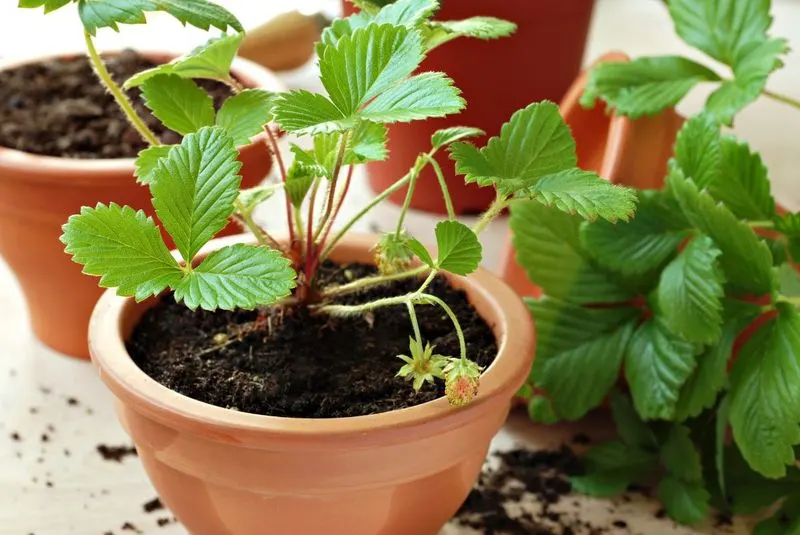
A high-quality potting mix is essential for healthy strawberry plants. Choose a mix rich in organic matter, with good aeration properties, to facilitate root growth.
Incorporate some perlite or vermiculite for improved drainage and a handful of compost to enhance nutrient content. Avoid garden soil as it may compact and hinder root development.
The right mix supports strong growth and robust berry production. This foundation helps plants resist diseases and pests, ensuring you enjoy a bountiful harvest of juicy strawberries.
Select the Right Strawberry Variety
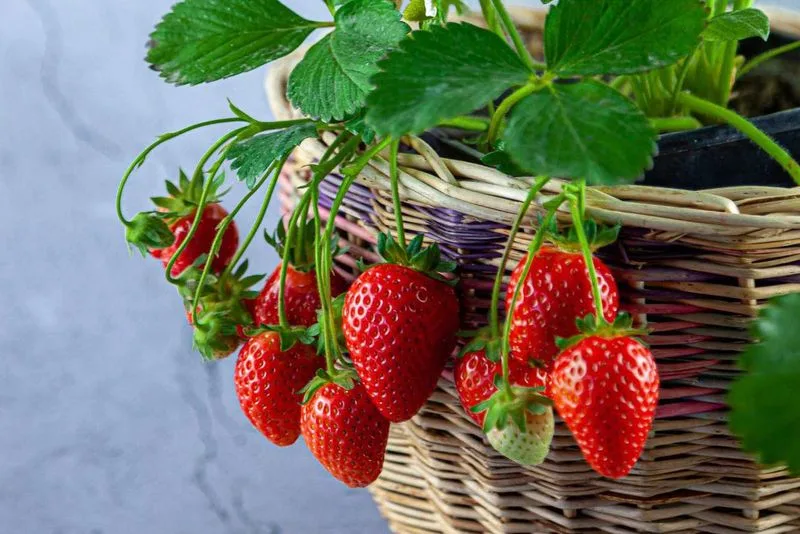
Choosing the right variety can significantly impact your yield. Ever-bearing and day-neutral varieties such as Albion and Seascape are excellent for containers, providing multiple harvests.
Alpine strawberries are a great choice if you prefer smaller, yet intensely flavored berries. Consider your climate and taste preferences when selecting varieties.
Each type has unique qualities—some are sweeter, others more robust. Picking the right variety ensures a steady supply of delicious strawberries suited to your needs.
Provide Adequate Sunlight
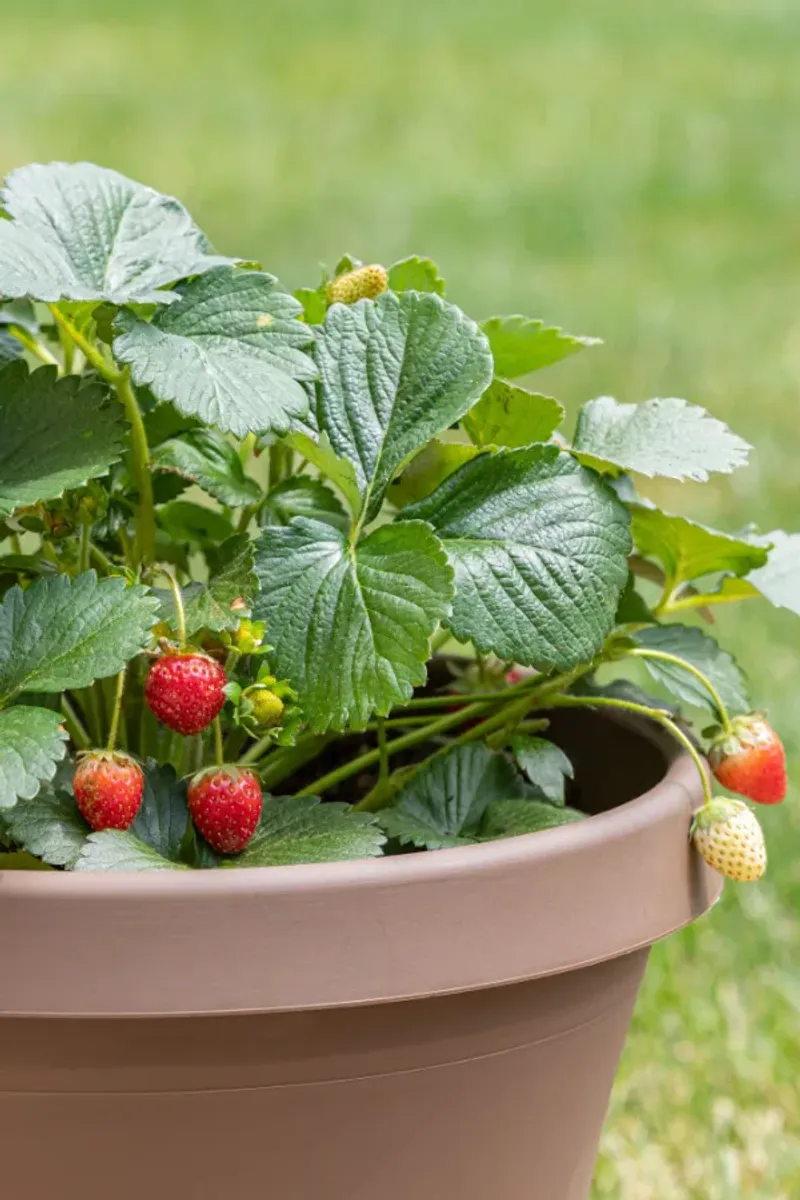
Strawberries thrive in sunlight, requiring at least six to eight hours of direct sun daily. Position your containers in the sunniest spot available, whether it’s a patio, balcony, or windowsill.
If natural light is scarce, consider supplemental grow lights to ensure they receive sufficient illumination. Proper sunlight exposure enhances photosynthesis, resulting in sweeter, more flavorful berries.
By optimizing light conditions, you ensure robust growth and a tasty harvest. The more sun, the better your strawberries will taste.
Water Wisely
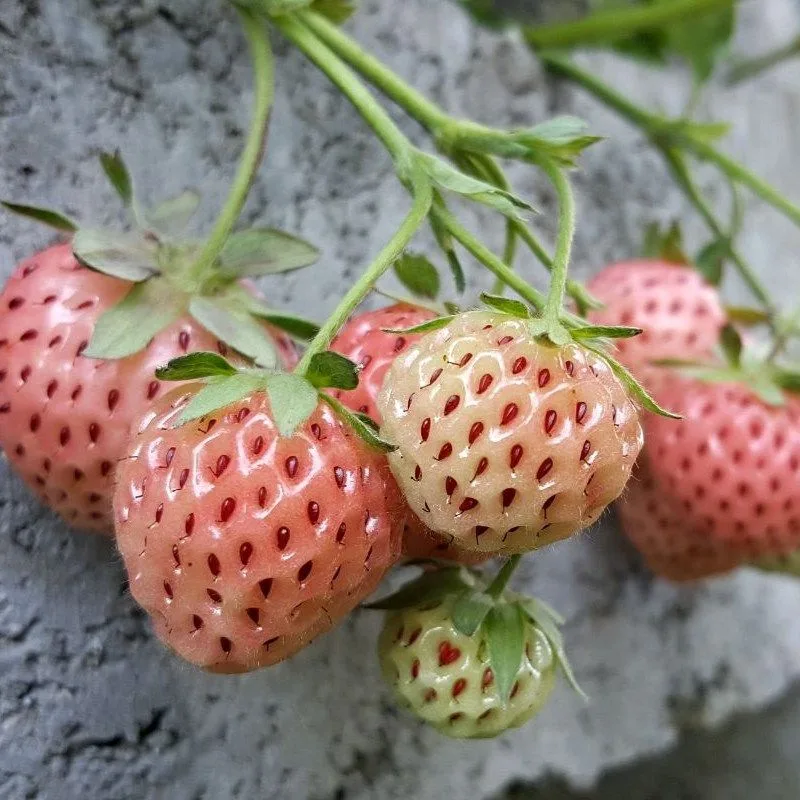
Consistent watering is crucial for strawberries, but overwatering can be detrimental. Keep the soil consistently moist, avoiding waterlogged conditions.
Check the top inch of soil; if dry, it’s time to water. Early morning is the best time to water, reducing evaporation and fungal risks. Use drip irrigation or a watering can with a narrow spout for precision.
Proper watering practices prevent root rot and promote healthy berry production. Remember, strawberries need just the right amount of moisture to flourish.
Fertilize Regularly

Regular fertilization keeps strawberry plants healthy and productive. Use a balanced, organic fertilizer every few weeks to maintain nutrient levels.
Liquid fertilizers or slow-release granules work well. Follow package instructions to avoid over-fertilization, which can harm plants.
Healthy, well-fed plants yield more and better-quality berries. The right nutrition supports vibrant growth and abundant fruiting, making your effort worthwhile.
Prune for Better Growth
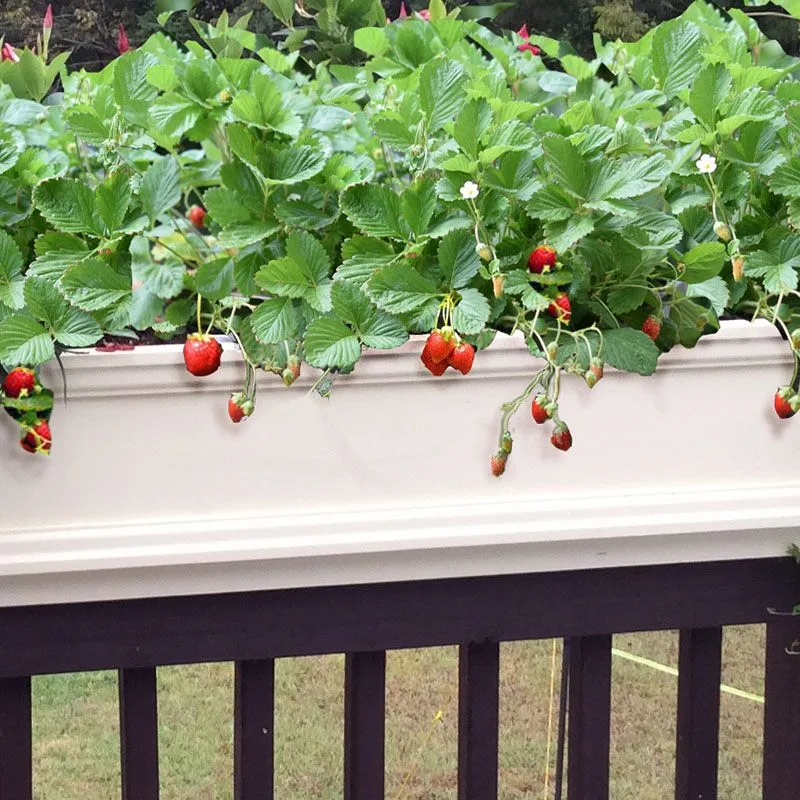
Pruning helps direct energy to fruit production rather than excess foliage. Remove dead leaves, spent flowers, and runners to encourage better growth.
Runners, in particular, can take energy away from fruiting, so snip them promptly. A well-pruned plant focuses on developing larger, juicier strawberries.
Regular pruning maintains plant vigor and enhances yield. It’s a simple yet effective way to boost your strawberry harvest.
Protect from Pests
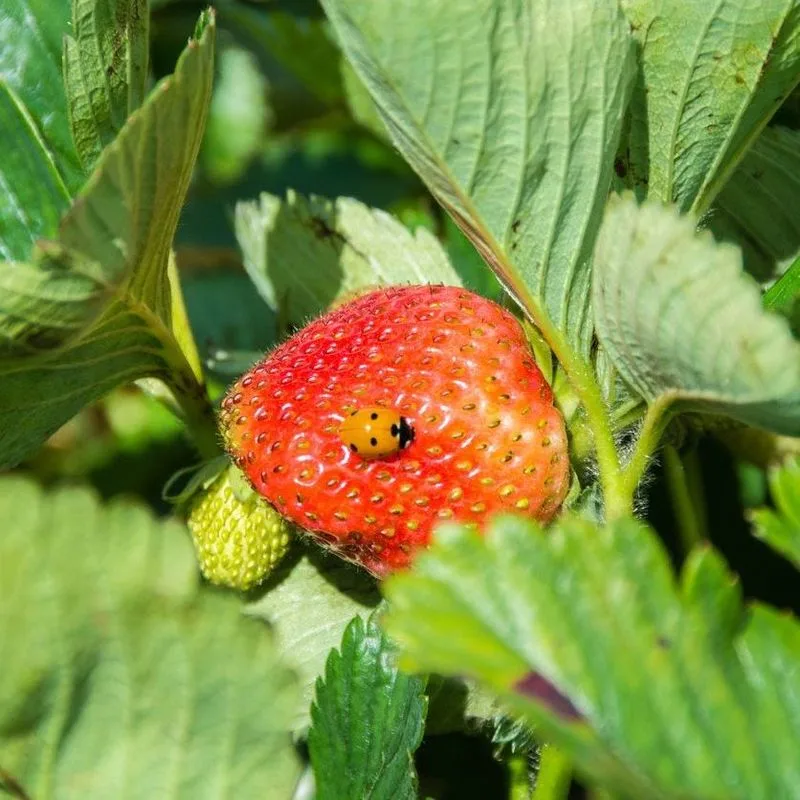
Strawberries in containers are still vulnerable to pests like aphids and slugs. Implement organic pest control methods, such as neem oil or insecticidal soap, to protect your plants.
Physical barriers like netting can also deter birds and larger pests. Regularly inspect your plants for signs of infestation, removing pests by hand if necessary.
By staying vigilant, you can enjoy healthy, pest-free strawberry plants that produce abundant fruit.
Rotate Your Crops
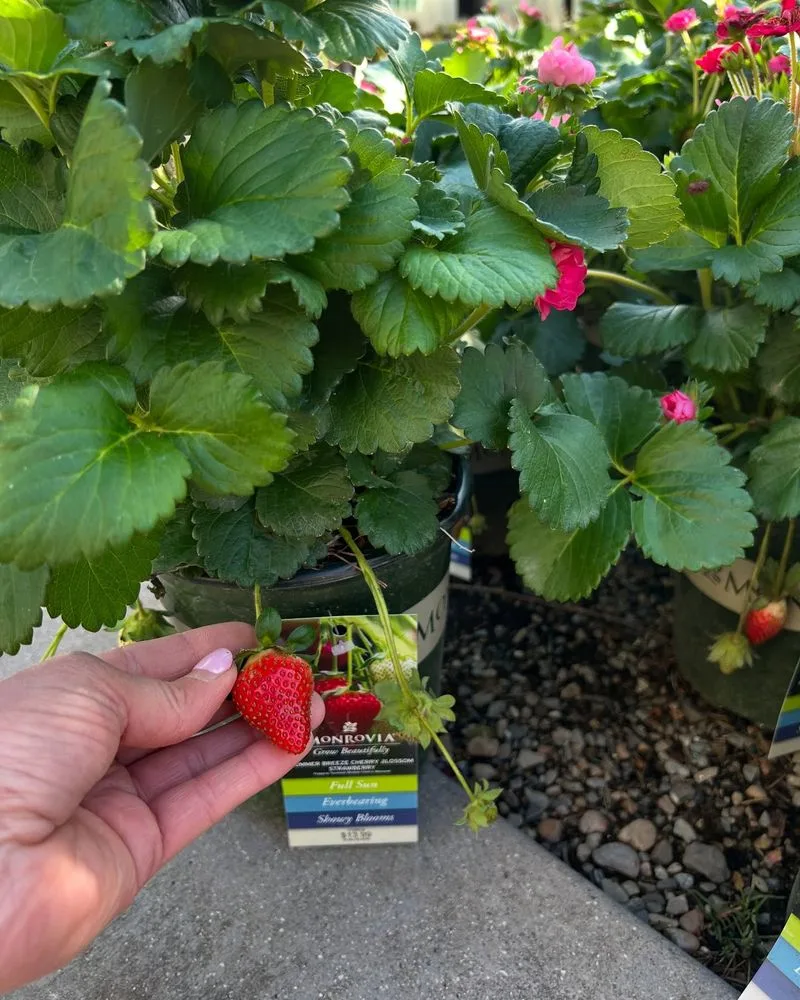
Crop rotation isn’t just for traditional gardens. In containers, rotating crops helps prevent soil depletion and disease buildup.
Switch the position or type of plants every season, allowing soil to recover and reducing pest issues. Incorporating other plants like herbs or flowers can enhance soil health.
Thoughtful rotation ensures your strawberry plants stay vigorous and productive year after year.
Mulch for Moisture Retention
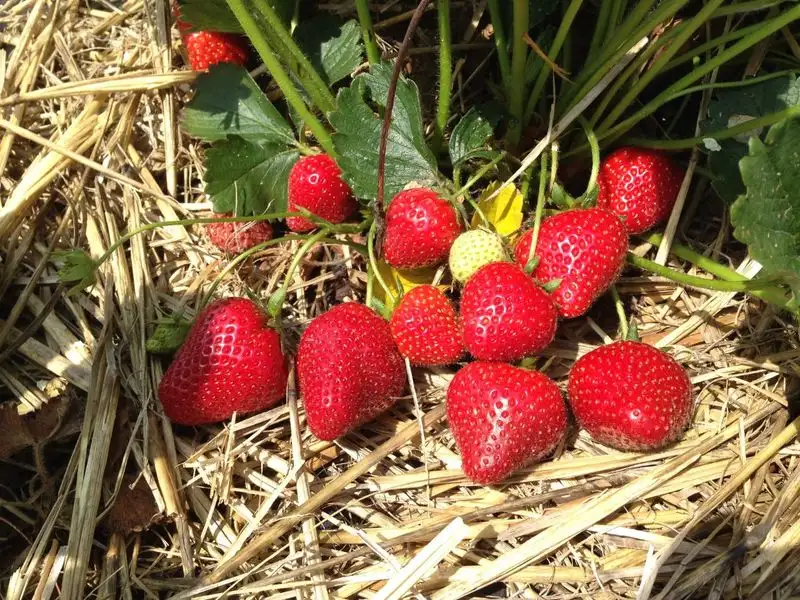
Mulching retains moisture and suppresses weeds, making it a valuable practice for container gardening. Use organic materials like straw or wood chips.
Apply a layer around your strawberry plants, ensuring it doesn’t touch the stems. This helps keep soil temperatures stable and reduces watering frequency.
Mulch supports a thriving environment, leading to healthier plants and a more fruitful harvest.
Pollination Aid
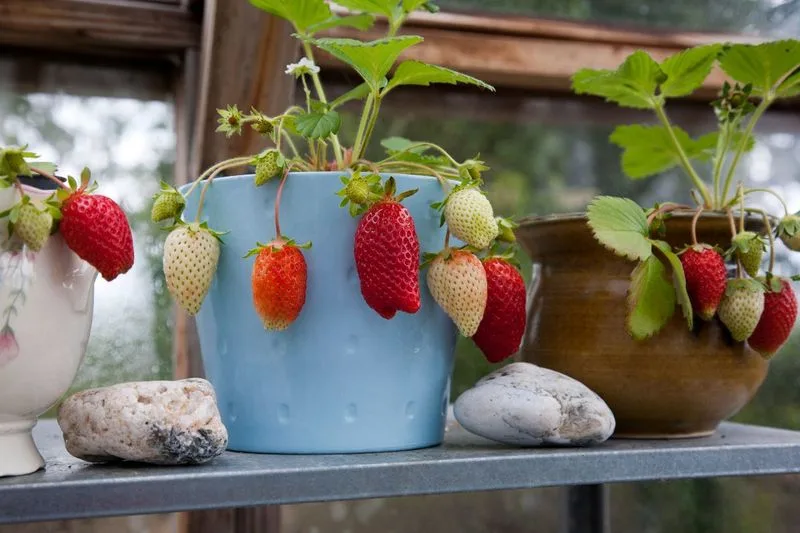
While strawberries self-pollinate, bees and other pollinators increase fruit set and size. Encourage pollinators by placing containers near flowers or using companion plants.
If pollinator activity is low, gently shake the plants to help transfer pollen. Enhanced pollination results in more and larger berries.
Fostering pollination boosts your strawberry yield significantly. Every little bee counts in your container garden.
Monitor for Disease
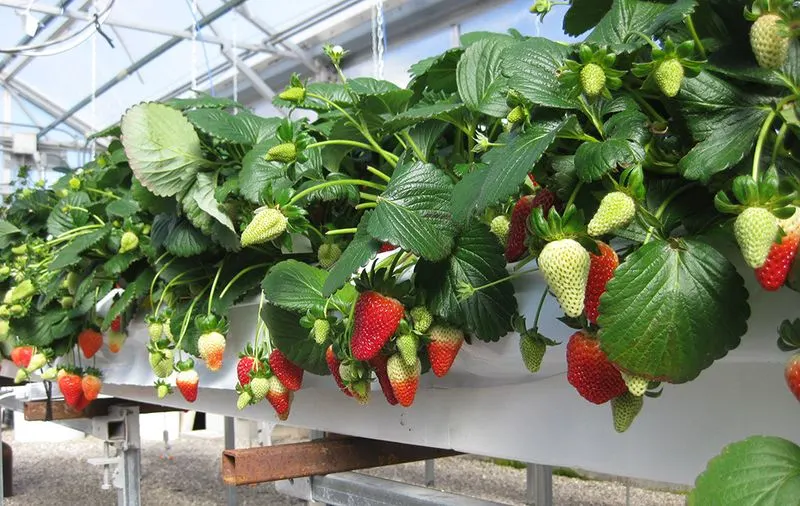
Diseases like powdery mildew can affect container strawberries. Regularly inspect plants for unusual spots or discolorations.
Promptly remove affected leaves and consider organic fungicides if necessary. Good air circulation and proper watering can prevent many issues.
Vigilant monitoring keeps your plants healthy and productive, safeguarding your strawberry harvest from potential diseases.
Adjust for Temperature Fluctuations
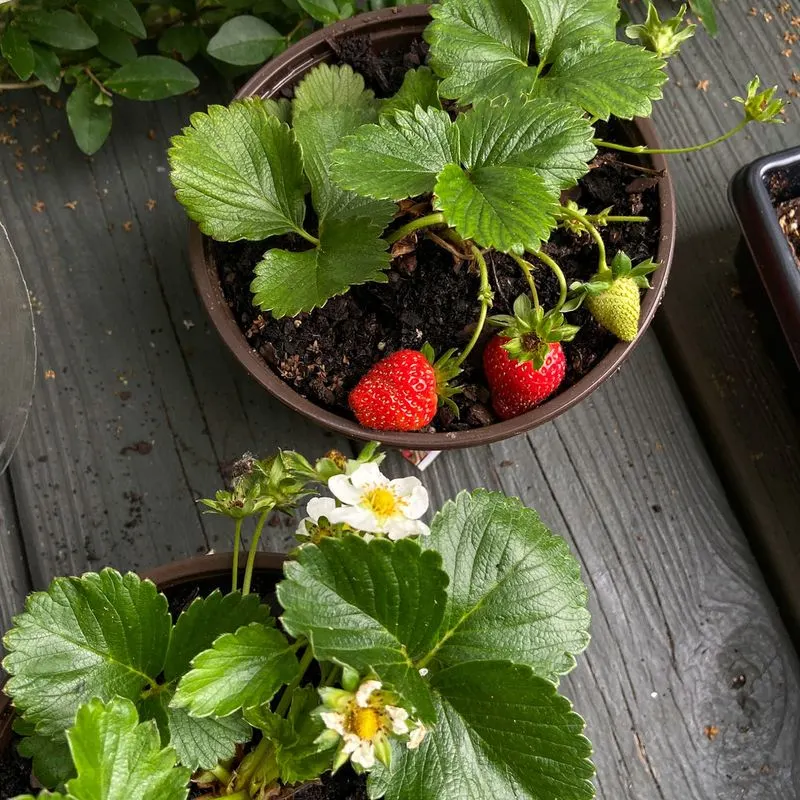
Strawberries prefer consistent temperatures but are resilient to fluctuations. During cooler months, move containers to sheltered areas.
In heat, provide shade to prevent wilting. Use cloches or covers to protect from unexpected frosts.
Adapting to temperature changes ensures your strawberry plants remain healthy and productive, no matter the season.
Thinning for Bigger Berries
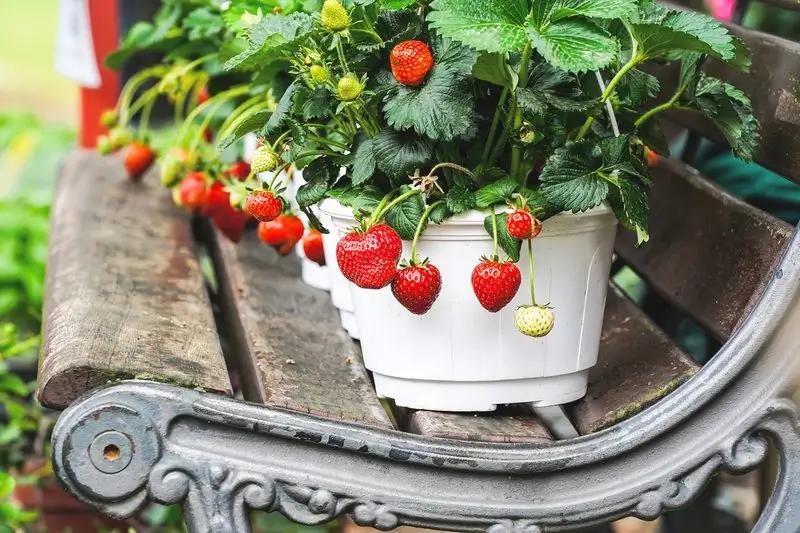
Thinning might seem counterproductive, but it encourages larger fruit size. Remove some berries early in the season to direct more nutrients to the remaining ones.
Focus on removing smaller or misshapen berries. This results in bigger, juicier strawberries that are more satisfying to harvest.
Thinning is a strategic move to enhance the quality of your strawberry yield.
Harvest at the Right Time
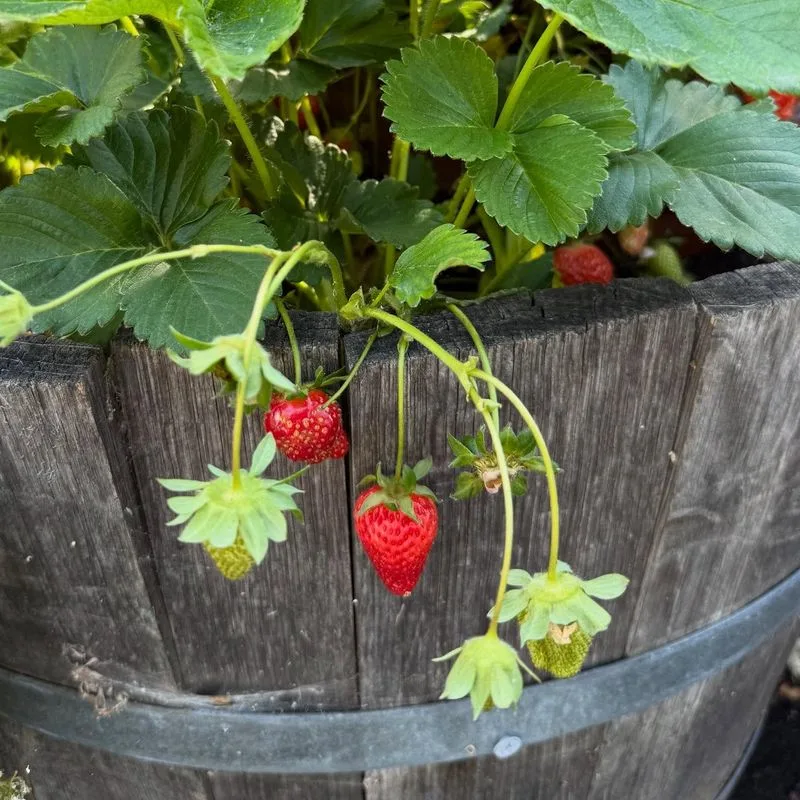
Timing is key when harvesting strawberries. Pick them when fully red and slightly firm to the touch.
Harvesting in the morning preserves their flavor and allows for longer storage. Use scissors or snip gently to avoid damaging the plant.
Proper harvesting techniques ensure you enjoy the freshest, most flavorful strawberries possible. Timing makes all the difference in taste and texture.

